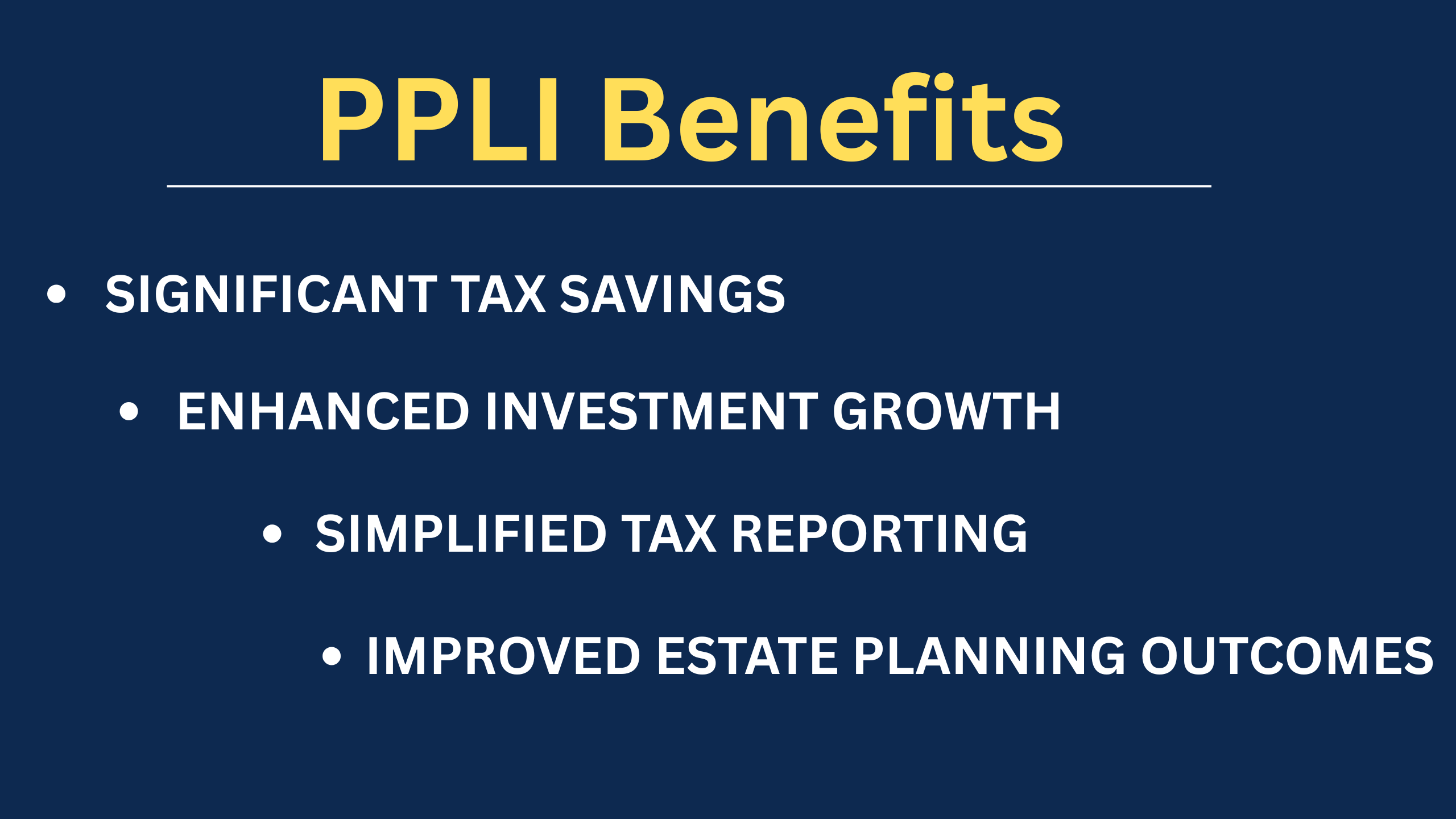When high-net-worth individuals seek effective tax management strategies, Private Placement Life Insurance (PPLI) often emerges as a powerful solution. This case study examines how a typical client implemented PPLI to address specific financial challenges and achieved remarkable results. Throughout this real-world example, we’ll explore the practical application of PPLI, highlighting the tangible benefits this specialized insurance structure offers. By following our client’s journey from initial consideration to successful implementation, readers will gain valuable insights into how PPLI might similarly benefit their own financial situations.
Client Background and Challenges
Meet James and Sarah, a married couple in their early 50s with a combined net worth of $25 million. As successful entrepreneurs who recently sold their technology company, they faced a significant tax burden on their investment income. Their portfolio generated approximately $800,000 annually through a combination of dividends, interest, and capital gains—all subject to the highest federal tax brackets, plus state taxes in California.
The couple’s primary financial concerns included minimizing current taxation on investment income, creating tax-efficient wealth transfer mechanisms for their two adult children, and maintaining reasonable access to their capital throughout retirement. Their existing portfolio consisted mainly of mutual funds, ETFs, and some alternative investments that generated annual K-1 forms, creating both tax inefficiencies and administrative headaches during tax season.
James and Sarah had already maximized their qualified retirement plan contributions and were seeking additional tax-advantaged investment vehicles. Their financial advisor suggested exploring PPLI as a potential solution to address their specific concerns while maintaining investment flexibility.
Initial PPLI Assessment
The first step in the couple’s PPLI journey involved a comprehensive evaluation of their financial situation and objectives. Working with a team of specialists, including their financial advisor, an insurance professional experienced with PPLI, and their tax attorney, they assessed whether PPLI aligned with their goals.
The assessment revealed several factors that made James and Sarah ideal candidates for PPLI. Their high income tax bracket meant they would benefit significantly from tax-deferred growth. With a long-term investment horizon of 15+ years before needing substantial distributions, they could maximize the compounding advantages of tax-free growth. Additionally, they had sufficient liquid assets to meet the minimum premium requirements without compromising their liquidity needs.
The evaluation also confirmed they qualified as accredited investors and qualified purchasers under securities regulations, making them eligible for PPLI products. Their desire to include alternative investments in their portfolio aligned well with PPLI’s capability to hold various asset classes within the insurance wrapper.
PPLI Design and Implementation
Based on the initial assessment, James and Sarah decided to implement a PPLI strategy with an initial premium of $5 million. The policy was structured as a non-modified endowment contract (non-MEC) to maximize tax benefits and flexibility. This classification allowed them to access the policy’s cash value through loans without triggering income taxes.
The PPLI policy was issued by a highly-rated insurance carrier with extensive experience in the private placement market. The carrier offered access to institutional investment options not typically available to retail investors, including institutional share classes of mutual funds with lower expense ratios and several alternative investment options.
The investment allocation within the PPLI policy was designed to complement their overall portfolio strategy, focusing on tax-inefficient asset classes that would otherwise generate significant annual taxation. This included:
- 40% allocation to fixed income investments, which would typically generate interest taxed at ordinary income rates
- 30% allocation to dividend-focused equity strategies
- 20% allocation to hedge fund strategies that historically produced frequent short-term gains
- 10% allocation to private equity funds
The policy ownership was structured through an irrevocable trust for estate planning purposes, providing additional wealth transfer benefits beyond the income tax advantages. This approach removed the policy proceeds from their taxable estate while maintaining indirect access to policy values during their lifetime through their role as trust beneficiaries.
Have Questions?
Contact us by filling the form, and we’ll get back to you soon!
Contact Us
Year-One Results
Within the first year after implementing the PPLI strategy, James and Sarah experienced several immediate benefits. Most notably, they eliminated approximately $150,000 in annual taxes on the investment income generated by the assets now held within the PPLI policy. This tax savings represented an immediate 3% annual return enhancement on the $5 million premium.
The couple also significantly simplified their tax reporting by eliminating multiple K-1 forms previously associated with their alternative investments, now held within the PPLI structure. Their tax preparer estimated this saved approximately 10 hours of additional tax preparation work and related fees.
From an investment perspective, the PPLI policy provided access to institutional share classes of funds with expense ratios approximately 0.5% lower than the retail funds they previously utilized. This expense reduction partially offset the insurance costs associated with the PPLI policy.
The policy death benefit, initially established at approximately $6.5 million (the minimum required to qualify as life insurance while maximizing investment capacity), provided an immediate estate planning benefit. This death benefit would pass income tax-free to their children through the trust structure.
Medium-Term Benefits (Years 2-5)
As the PPLI policy matured over the next few years, James and Sarah continued to benefit from its structure in several ways. By year five, the policy’s cash value had grown to approximately $6.8 million, representing an annualized return of approximately 6.3% after all policy expenses. This growth occurred without generating any taxable income, allowing full compounding of returns.
During this period, the couple made an additional premium payment of $2 million in year three, further expanding their tax-advantaged investment capacity. The policy was structured to accept additional premiums, providing flexibility as their financial situation evolved.
In year four, James and Sarah needed funds for a real estate investment opportunity. Rather than liquidating taxable investments and triggering capital gains, they accessed $500,000 through a policy loan from their PPLI contract. This loan provided tax-free access to funds without disrupting the policy’s investment allocation or creating a taxable event.
The couple’s overall tax situation improved significantly during this period. Their effective tax rate decreased by approximately 4 percentage points, primarily due to the reduction in taxable investment income. This tax efficiency allowed them to redirect tax savings toward additional investments and charitable giving.
Long-Term Outcomes (10+ Years)
The full benefits of the PPLI strategy became even more apparent over the longer term. By year ten, the policy’s cash value had grown to approximately $12.5 million, representing a significant portion of the couple’s overall wealth. The compounding effect of tax-free growth created substantial additional wealth compared to what would have been possible in a taxable investment account.
Assuming a 7% gross return and a 35% combined federal and state tax rate on investment income, the tax-free growth within the PPLI policy created approximately $2.7 million in additional wealth compared to a taxable account over this period.
As James and Sarah approached retirement, the policy provided a valuable source of tax-efficient income. By taking systematic loans against the policy cash value, they created a tax-free income stream to supplement their other retirement resources. This approach allowed them to manage their overall taxable income during retirement, potentially reducing taxes on Social Security benefits and avoiding Medicare premium surcharges.
From an estate planning perspective, the PPLI policy’s death benefit had grown to approximately $14 million by this point, reflecting the increased cash value plus the remaining insurance component. This amount would pass to their children free of income tax and, because of the trust ownership structure, outside of their taxable estate.
Key Lessons from the Case Study
James and Sarah’s experience highlights several important lessons about successful PPLI implementation. First, proper candidate selection proved essential—their high tax bracket, long-term investment horizon, and substantial investable assets made them ideal PPLI clients. Without these characteristics, the benefits might not have outweighed the costs and complexity.
Policy design also significantly impacted outcomes. By structuring the policy as a non-MEC and selecting appropriate investment options for the insurance wrapper, they maximized both tax efficiency and flexibility. Coordination with overall wealth planning was equally critical, as the PPLI strategy complemented their other investments and estate planning objectives rather than standing alone.
Professional guidance from advisors experienced with PPLI proved invaluable throughout the process. The specialized nature of these policies required expertise across insurance, investments, tax planning, and estate law to achieve optimal results. Finally, patience in realizing the full benefits was essential, as the advantages of PPLI compounded significantly over time.
Practical Considerations for Prospective PPLI Clients
For individuals considering PPLI based on this case study, several practical considerations deserve attention. First, minimum investment thresholds typically start at $1-5 million in premium payments, making this strategy appropriate only for those with substantial investable assets. Initial costs can be higher than other investment vehicles, with the expectation that long-term tax benefits will offset these expenses.
Liquidity constraints also require careful planning, as PPLI works best when the invested assets won’t be needed for several years. The policy design must carefully balance access needs with tax benefits. Selection of the insurance carrier demands thorough due diligence regarding financial strength, experience with PPLI, available investment options, and policy costs.
Finally, ongoing monitoring and management remain essential, as changes in tax laws, investment performance, or personal circumstances may necessitate adjustments to the strategy over time. This requires maintaining relationships with knowledgeable advisors who can provide guidance as the policy matures.
Conclusion
James and Sarah’s case study demonstrates how PPLI can serve as a powerful financial planning tool for the right clients. Through this structured approach to insurance and investments, they achieved significant tax savings, enhanced investment growth, simplified tax reporting, and improved estate planning outcomes.
The benefits they experienced—tax-deferred growth, tax-free access to funds through policy loans, and income tax-free death benefits—illustrate PPLI’s potential advantages for high-net-worth individuals with similar characteristics and objectives. While not suitable for everyone, PPLI offers compelling advantages for qualified investors seeking tax efficiency and wealth preservation.
For those interested in exploring whether PPLI might benefit their own financial situation, the first step involves consulting with advisors experienced in this specialized area of planning. By conducting a thorough assessment of your financial objectives, tax situation, and investment preferences, you can determine if PPLI represents an appropriate strategy for your wealth management approach.
At Colva Services, our team specializes in helping clients evaluate and implement Private Placement Life Insurance strategies tailored to their specific needs.
Contact us to learn more about how PPLI might enhance your financial plan through tax efficiency and investment flexibility.
Book a Call





0 Comments